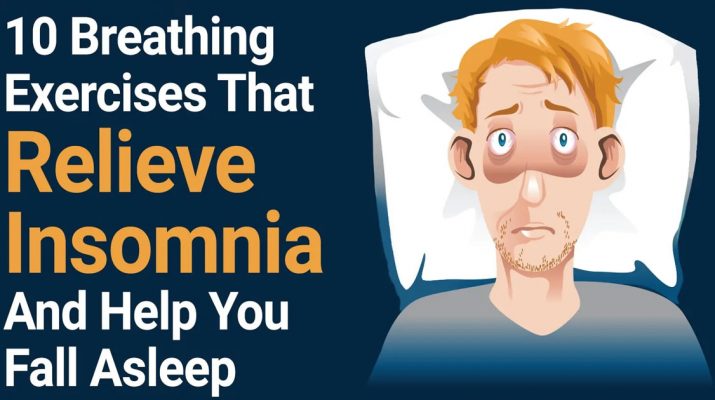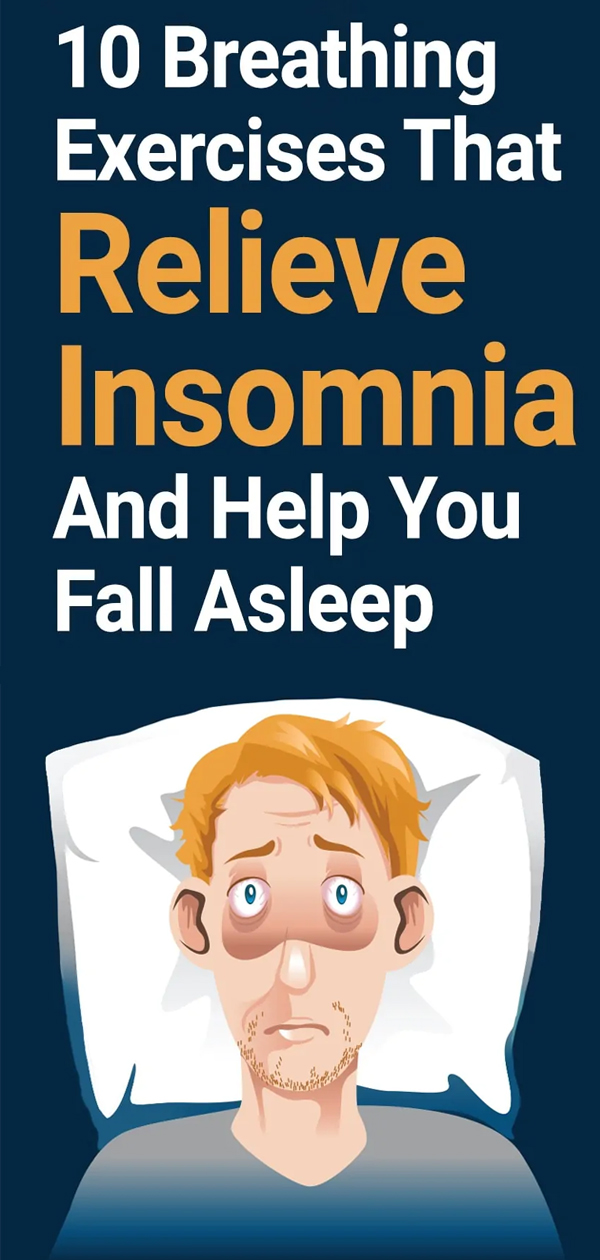Do you struggle to fall asleep every night? You aren’t alone. Approximately 60 million Americans have insomnia.
Although it only plagues you at night, insomnia has long-lasting consequences that impact your entire life. From sleeplessness and fatigue throughout the day, concentration problems and even health issues, finding a way to relieve insomnia isn’t just a desire for most people, it’s a necessity.
Relaxation techniques help you fall asleep and beat insomnia. With one in five people struggling to get some Z’s every night, learning about insomnia breathing exercises can help you get the rest you need and start living life to the fullest.
How Do Relaxation Techniques Relieve Insomnia?
Insomnia can be a primary or secondary condition, meaning it’s either existent on its own or caused by another problem. People who have depression, anxiety and other mental health disorders are far more likely to suffer from sleep problems. More than 50 percent of people with anxiety and 90 percent of those with depression suffer from insomnia.
Sleep meditation and other relaxation techniques help focus the mind and lower stress levels by stimulating the parasympathetic nervous system. Breathing exercises like diaphragmatic breathing trigger the body’s natural relaxation response and help us fall asleep.
Check out these 10 breathing exercises to relieve insomnia that you can try tonight.
1. The 2-To-1 Exercise
The 2-to-1 breathing exercise is simple: You exhale for twice as long as you inhale on a single breath. Yoga International explains the benefit of this exercise by describing its impact on both the sympathetic and parasympathetic nervous systems.
The sympathetic nervous system is less stimulated during the 2-to-1 breathing technique, which allows for greater stimulation of the parasympathetic nervous system, which slows the heart rate and relaxes your body.
You can choose how long you decide to breathe in, though most people are comfortable with three to four seconds. Sit up straight in a chair with your spine aligned or lie down in bed, arms out at your sides with your palms facing upward.
Breathe in through your nose for a comfortable count, then exhale for half of that. You should gently count each breath without whispering. Yoga International advises people to avoid mental counting during this exercise to prevent any breathing irregularities. Your concentration should be solely on your breaths.
Make sure you contract your abdominal muscles to push out extra air. Deepening your exhalations will ensure you push out toxins like carbon dioxide and increase blood flow to the heart and lungs.
2. The 4-7-8 Breathing Exercise
This exercise is also known as the “Relaxing Breath” and can reportedly help some people fall asleep in just one minute. Creator Dr. Andrew Weil describes this technique as “a natural tranquilizer for the nervous system.” As a practitioner of integrative medicine and fan of the holistic approach to health, Dr. Weil developed the 4-7-8 breathing method to help people combat not only insomnia but also moments of stress and anxiety.
Grounding, the process of rooting oneself to the present moment through breathing exercises and mindfulness, helps patients with anxiety disorders effectively calm themselves and prevent panic attacks. For those with insomnia, this breathing technique can have a sedating effect as it encourages the rapid expulsion of carbon dioxide and soothes the body’s nervous systems.
To do the 4-7-8 method, simply inhale through your nose for four seconds, hold for seven and exhale audibly through your mouth for eight. During the exercise, you should touch the tip of your tongue to the roof of your mouth on the spot just before your front teeth.
While the speed and intensity aren’t important, regulation makes a difference. Dr. Weil stresses the importance of regulating your breaths and concentrating on consistency. Dr. Weil says you should never do four breath cycles in one sitting, but you should strive to do the exercise at least twice a day.
3. Belly Breathing
Most of us tend to breathe with our chests, and these shallow cycles don’t do much to aid our minds. In fact, during periods of anxiety or stress, our breathing can become even more shallow and unregulated.
Harvard Health encourages people to practice abdominal breathing exercises to slow down your heart rate and stabilize blood pressure, making it easier to drift off to sleep.
4. Alternate Nostril Breathing
This technique is derived from a yoga breathing practice called pranayama. When you concentrate on this exercise, you can experience a deep sense of peace and tranquility that will quell any racing thoughts and make it easier to fall asleep.
To begin, place your right thumb over your right nostril and inhale deeply through the left. When you’ve completely inhaled, pause and remove your thumb and place your ring finger on your left nostril before exhaling slowly. Repeat this exercise for several breath cycles. After a few, you should feel much more relaxed and able to fall asleep.
If you’re still restless, direct your attention to your breathing after the exercise and simply observing each breath How do they feel? Are they deep or shallow? Do they come from your chest or belly? Concentration without the impulse to control anything can help further increase your feelings of relaxation.
5. Visualizing Breaths
As you inhale, imagine your favorite color. Think of this color moving through your body as you breathe in, relaxing all of your muscles and nourishing your cells from the top of your head all the way down to your toes. Don’t hold your breath for too long or force yourself to inhale forcefully.
You can incorporate some progressive muscle relaxation during this exercise. With each breath, focus on a specific part of your body. Focus on relaxing that specific region and readying it for sleep before moving onto the next breath.
6. Counting Breaths
Inhale, exhale. One. Inhale, exhale. Two. This exercise can help disrupt intrusive thoughts and bring your attention back to the present. Perform this technique to the count of five, then repeat two more times.
7. Humming Breath
The Sanskrit word for bee is “brahmari,” which is where this exercise gets its name. normally through your nose, then exhale through your mouth while making a humming sound from your throat. Gently close your ears with your index fingers so you can focus on the sound and sensation it creates.
8. Equalized Breathing
This breathing technique also involves mental counting. Instead of holding your breath for a set period and releasing it for another, this exercise is all about regulation and restoring your equilibrium. Inhale for, say, four seconds. Exhale for the same amount. Repeat at least five times, counting each second in your head.
9. Face-Focused Breathing
Many people find themselves distracted during breathing exercises. In order to keep your attention rooted in the physical world rather than your thoughts, gently touch a part of your face for each breath during this exercise. First, close your eyes. Breathe in for several counts and gently place your index finger on your right eye. Exhale. On the next inhalation, move your finger to your left eye. Exhale.
Repeat this practice while moving on to the tip of your nose and mouth. You can perform several breaths on each feature or start the exercise over and complete it two or three times.
10. Sound Meditation
Find some sleep sounds on YouTube that relaxes you. Ocean waves, light rain or a fan are common white noises that help people calm down. With the sounds on, lay on your bed in a comfortable position. Laying on your back is recommended as this allows for the greatest expansion of your lungs and improves airflow.
Breathe normally for a few cycles, concentrating on the sounds around you. When you’re ready, close your eyes on an exhale. Feel the weight of your body pressing down on the bed. Listen to the rhythm of the white noise, and begin to count your breaths backward from 10. Each inhales and exhale counts as one breath.
You can perform up to three repetitions of this exercise. Don’t try too hard to control your breathing during this meditation. Instead, concentrate on becoming more aware of your body and its natural sensations as the air moves in and out of your lungs. For those who prefer simple breathing exercises to relieve insomnia, sound-based meditation is a good choice.
More Ways To Help Beat Insomnia
Eating a healthy diet, exercising regularly and maintaining a regular bedtime routine can help you sleep better at night. Many insomniacs develop anxiety around bedtime because they dread tossing and turning for hours on end.
Avoid staying in your bed when you can’t sleep. Instead, cultivate a quiet and peaceful space that you can relax in. Even when your body doesn’t want to fall asleep right away, you can ensure that your bedroom and the night are only associated with tranquility and relaxation.
If your mental health is causing your restlessness, talk to your doctor. Depression, anxiety and other mental disorders are highly treatable. The hardest step for many people is reaching out for help.
Breathing exercises, diet and self-care might not cure your insomnia overnight, but they can certainly alleviate the severity of your condition and make it much easier to treat.


